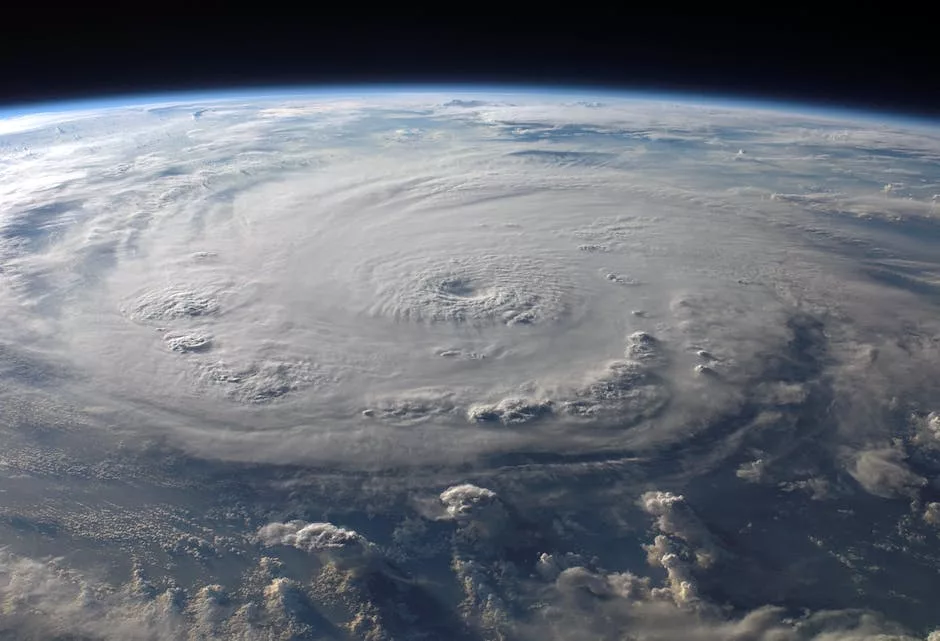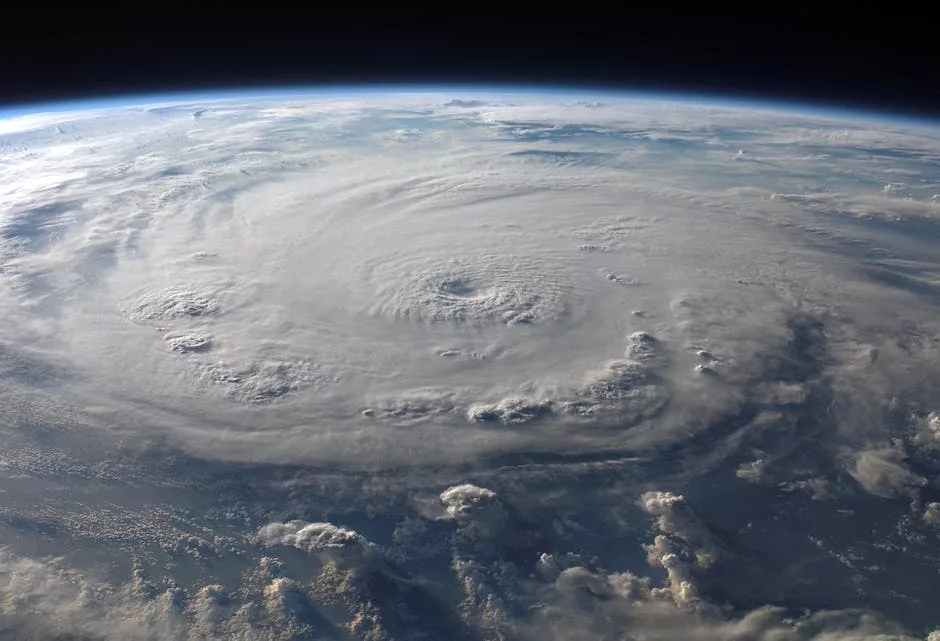Introduction
Local residents relocate inland after Hurricane Ian.
The Impact of Hurricane Ian on Local Residents’ Housing Options

Hurricane Ian was a force to be reckoned with. It swept through the coastal towns, leaving a trail of destruction in its wake. Local residents were left with no choice but to relocate inland, as their homes were either destroyed or severely damaged. The impact of Hurricane Ian on local residents’ housing options was significant, and many had to make tough decisions about where to live next.
For some, the decision to relocate inland was an easy one. They had family or friends who lived in safer areas, and they were able to find temporary housing until they could get back on their feet. Others, however, were not so lucky. They had to search for new homes in unfamiliar areas, and the process was not always smooth sailing.
One local resident, who wished to remain anonymous, shared her experience of relocating inland after Hurricane Ian. She said, “I never thought I’d be living in the middle of nowhere, but here I am. I had to leave my beautiful beachfront home and move to a tiny town in the middle of the state. It’s not exactly what I had in mind for my retirement, but I guess it’s better than being homeless.”
Despite the challenges, many local residents found humor in their situation. They joked about their new surroundings, and some even embraced the change. One resident said, “I never knew there were so many cows in this state. I wake up every morning to the sound of mooing. It’s like living on a farm, but without the work.”
Another resident shared her experience of living in a small town. She said, “I never thought I’d be living in a place where everyone knows everyone else’s business. It’s like being in a soap opera. I can’t go to the grocery store without someone asking me how I’m doing. It’s kind of nice, though. It’s like having a built-in support system.”
Despite the humor, the impact of Hurricane Ian on local residents’ housing options was significant. Many were forced to leave their homes and start over in new areas. Some were able to find temporary housing, while others had to search for new homes on their own. The process was not always easy, but local residents showed resilience and strength in the face of adversity.
In the end, Hurricane Ian taught local residents an important lesson about the importance of being prepared for natural disasters. Many realized that they had not taken the necessary precautions to protect their homes and families, and they vowed to do better in the future. While the impact of Hurricane Ian on local residents’ housing options was significant, it also brought the community together and reminded them of the importance of supporting one another in times of need.
In conclusion, Hurricane Ian was a devastating event that left many local residents with no choice but to relocate inland. The impact on their housing options was significant, but local residents showed resilience and humor in the face of adversity. While the process of finding new homes was not always easy, it brought the community together and reminded them of the importance of being prepared for natural disasters.
Community Efforts to Assist Inland Relocated Residents After Hurricane Ian
Hurricane Ian was a force to be reckoned with. The storm hit the coast with such ferocity that many residents were forced to evacuate their homes. Some chose to ride out the storm, but others decided to relocate inland. The aftermath of the hurricane left many residents displaced and in need of assistance. Fortunately, the community rallied together to help those in need.
The first step in assisting the relocated residents was to find them a place to stay. Many local hotels and motels offered discounted rates to those who had been displaced by the hurricane. The community also opened up their homes to those in need. It was heartwarming to see how many people were willing to help their fellow neighbors in their time of need.
Once the relocated residents had a place to stay, the community began to focus on providing them with basic necessities. Food, water, and clothing were in high demand. Local grocery stores and restaurants donated food and water to those in need. Clothing drives were organized to provide clothing for those who had lost everything in the storm.
The community also came together to provide emotional support for those who had been displaced. Many residents had lost their homes and possessions, and were understandably upset. The community organized support groups and counseling services to help those who were struggling to cope with the aftermath of the hurricane.
Despite the devastation caused by Hurricane Ian, the community managed to find humor in the situation. Many residents joked about the irony of having to relocate inland to escape a hurricane. Some even joked that they had moved to a new state altogether. It was refreshing to see that even in the face of adversity, the community was able to find a way to laugh and come together.
As time passed, the community continued to assist the relocated residents in their transition to their new homes. Many residents had to find new jobs and schools for their children. The community helped to connect them with local resources and job opportunities. It was heartwarming to see how the community continued to support those who had been displaced by the hurricane.
In the end, Hurricane Ian brought the community together in a way that no one could have predicted. The storm may have caused devastation and destruction, but it also brought out the best in people. The community rallied together to help those in need, and in doing so, they proved that even in the face of adversity, there is always hope.
In conclusion, the community efforts to assist inland relocated residents after Hurricane Ian were nothing short of remarkable. The community came together to provide housing, food, clothing, emotional support, and job opportunities to those who had been displaced by the hurricane. Despite the devastation caused by the storm, the community managed to find humor in the situation and come together in a way that was truly inspiring. Hurricane Ian may have caused destruction, but it also brought out the best in people.
The Emotional Toll of Relocating Inland After Hurricane Ian: Local Residents Share Their Stories
Hurricane Ian was a force to be reckoned with. It swept through the coastal towns of our beloved state, leaving a trail of destruction in its wake. Many residents were forced to evacuate their homes and seek shelter elsewhere. For some, that meant relocating inland. The emotional toll of such a move cannot be overstated. In this article, we will hear from local residents who have experienced this firsthand.
First up is Sarah. She and her family were forced to leave their beachfront home and relocate to a small town about an hour inland. “It was a shock to the system, let me tell you,” she says. “We went from waking up to the sound of waves crashing on the shore to hearing roosters crowing at the crack of dawn.” Sarah admits that it took some time to adjust to their new surroundings, but they eventually found their footing. “We’ve made some great friends here, and we’ve even started a community garden. Who knew we had green thumbs?”
Next, we have Tom. He and his wife decided to relocate to a larger city about two hours inland. “We figured if we were going to have to start over, we might as well go big,” he says with a chuckle. Tom admits that the move was difficult at first, but they quickly fell in love with their new city. “There’s so much to do here! We’ve been to more museums and concerts in the past few months than we have in our entire lives.”
Finally, we have Maria. She and her family relocated to a small town just a few miles inland. “It was tough leaving our home, but we knew we had to do what was best for our family,” she says. Maria admits that the move was emotionally draining, but she found solace in her new community. “Everyone here has been so welcoming. We’ve been invited to barbecues and game nights, and we even joined a local church. It’s been a blessing in disguise.”
While each of these residents had a unique experience, they all agree that the emotional toll of relocating inland after Hurricane Ian was significant. “It’s not just about leaving your home,” says Sarah. “It’s about leaving your community, your friends, your way of life. It’s a lot to process.” Tom agrees, adding that it’s important to give yourself time to adjust. “It’s okay to feel sad or angry or frustrated. But eventually, you have to pick yourself up and start over.”
Maria echoes this sentiment, saying that it’s important to find a support system. “Whether it’s family, friends, or a new community, you need people who will lift you up and help you through the tough times.” She also advises others who may be facing a similar situation to stay positive. “It’s easy to get bogged down in the negative, but there’s always a silver lining. You just have to look for it.”
In the end, these local residents prove that while relocating inland after a hurricane can be emotionally taxing, it can also be an opportunity for growth and new beginnings. As Tom puts it, “Life is unpredictable. You never know what’s going to happen. But you can choose how you react to it.”
Conclusion
Local residents relocate inland after Hurricane Ian due to the destruction caused by the hurricane.



